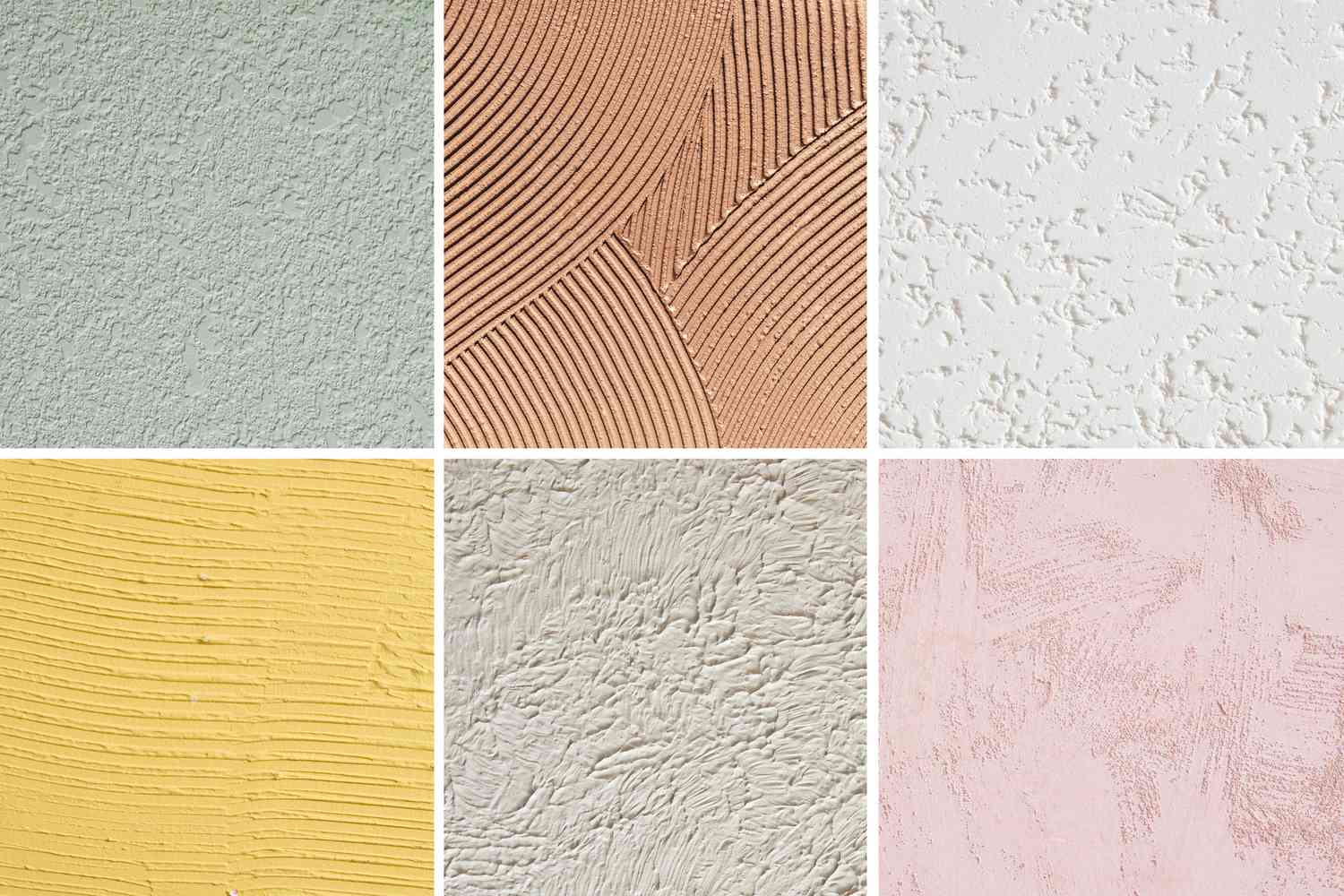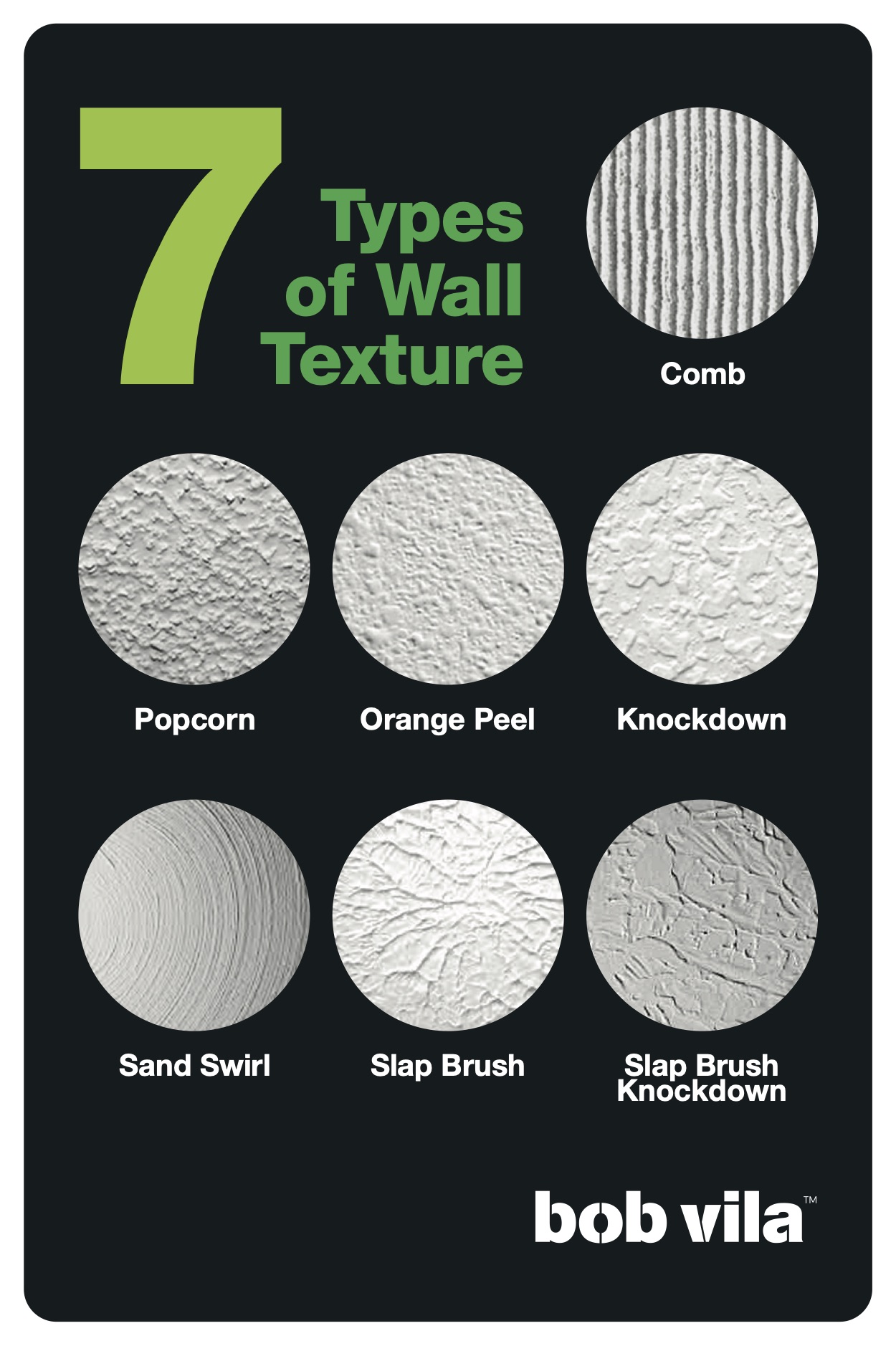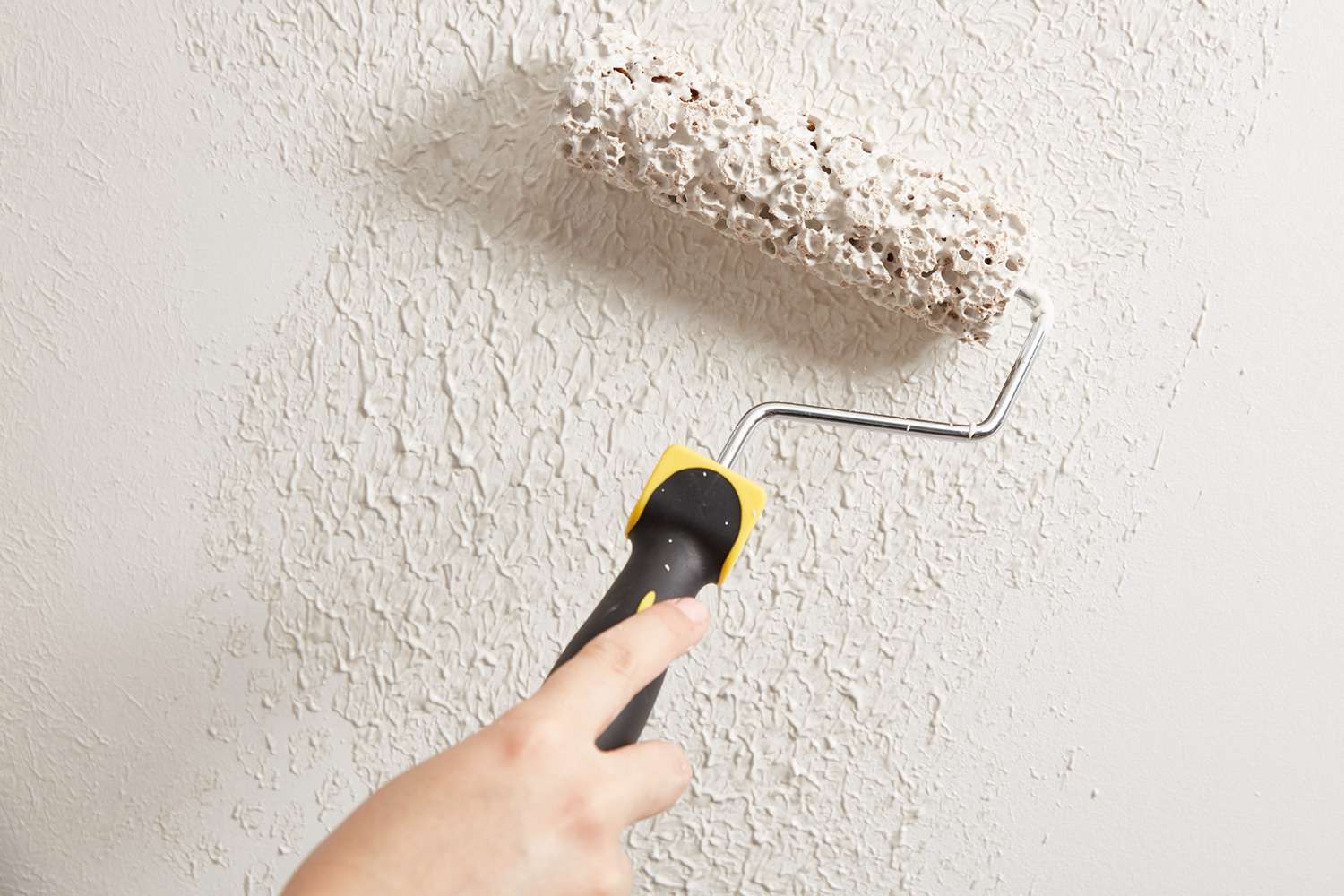Wall textures refer to the surface finish applied to interior walls and ceilings. They serve both aesthetic and practical purposes, such as hiding imperfections and adding visual interest. The choice of texture can significantly impact a room's style and perceived dimensions.
Smooth Finish
A smooth finish is the absence of any applied texture, resulting in a flat, sleek surface. It provides a modern, clean look and is ideal for highlighting wall colors and decor. However, it demands meticulous drywall finishing as imperfections are easily visible.
Characteristics:

- Clean, contemporary appearance.
- Highlights imperfections in drywall if not perfectly prepared.
- Easier to clean and repaint than textured surfaces.
Orange Peel Texture
Orange Peel texture mimics the slightly dimpled surface of an orange. It is a subtle texture created by spraying thinned drywall joint compound onto the walls. It is popular for its ability to hide minor wall flaws and its relatively easy application.
Characteristics:
- Subtle, dimpled appearance.
- Good for hiding minor imperfections.
- Durable and relatively easy to clean.
- Commonly applied with a hopper gun.
Knockdown Texture
Knockdown texture is created by spraying drywall compound in a splattered pattern and then "knocking down" the peaks with a trowel or knockdown knife once partially dry. This results in a random, flattened texture with a style often associated with Spanish or Mediterranean aesthetics.
Characteristics:
- Rustic, slightly flattened appearance.
- Effectively conceals surface imperfections.
- Can vary from light to heavy depending on application.
- More difficult to patch seamlessly than orange peel.
Popcorn Texture (Acoustic Texture)
Popcorn texture, also known as acoustic texture, was widely used for ceilings due to its sound-dampening qualities and ability to hide imperfections. It consists of coarse particles, traditionally polystyrene or vermiculite, mixed into a paint-like base. Its popularity has declined due to its dated look, difficulty in cleaning and repair, and potential asbestos content in older applications.

Characteristics:
- Coarse, bumpy appearance.
- Offers some sound-dampening properties.
- Effectively hides ceiling imperfections.
- Difficult to clean, repair, and remove.
- Older installations (pre-1980s) may contain asbestos.
Sand Swirl Texture
Sand Swirl texture is created by adding sand to primer, paint, or drywall mud and then applying it in a swirling pattern using a brush or trowel. It creates a distinct, decorative look with a series of overlapping semi-circular patterns.
Characteristics:
- Decorative, patterned appearance with arching swirls.
- Can be subtle or pronounced depending on sand coarseness and application technique.
- Requires skill to apply consistently for a uniform look.
Slap Brush Texture (Crow's Foot, Stomp Brush)
Slap Brush texture, also known as Crow's Foot or Stomp Brush, is created by "stomping" or "slapping" a special brush (often a double brush or a stiff-bristled one) onto a wet layer of drywall mud. This creates a distinct, fan-like or sunburst pattern.
Characteristics:

- Creates a bold, patterned texture.
- The pattern can vary significantly based on the brush and technique used.
- Good for hiding imperfections.
- Can be challenging to repair seamlessly.
Comb Texture
Comb texture is achieved by applying drywall mud and then using a toothed trowel or a comb-like tool to create patterns, such as lines, arcs, or waves. The depth and design of the texture depend on the tool and the specific technique employed by the applicator.
Characteristics:
- Allows for a variety of linear or curved patterns.
- Can range from subtle to very pronounced depending on comb size and pressure.
- Requires a consistent hand for uniform pattern application.
Venetian Plaster
While more of a polished finish than a conventional texture, Venetian plaster is a putty made from fired limestone or marble dust mixed with water. It is applied in thin, multiple layers and then burnished to create a smooth surface with the illusion of depth and texture, resembling polished marble or stone.
Characteristics:
- Smooth, highly polished, marble-like appearance.
- Creates a sense of depth and visual movement.
- Labor-intensive application process requiring skill.
- Offers a luxurious, high-end, and durable finish.







